27 Jan 2021 - {{hitsCtrl.values.hits}}
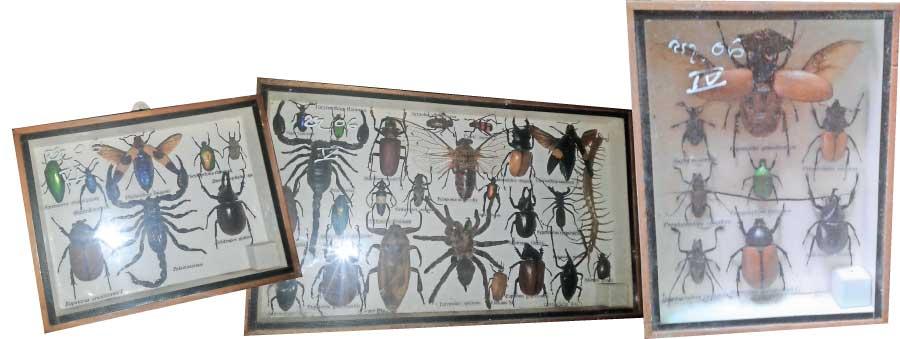
Imported insect species found during raids
- Wildlife trade is a global network generating revenues up to USD 23 billion annually
- Officials were unable to establish if the tattoo parlour was involved in trade. The owner has been charged for possession of illegal wildlife
- However sources revealed that the group of people had engaged in this business for
- some time
If you are on the lookout for exotic pets, rare foreign insects or even an animal tooth for a talisman, you would have to look no further than a particular stretch along the Galle road, Mount Lavinia. Although most of us imagine that illegal trade of this sort takes place in dark corners and alleyways, recent discoveries made by authorities suggest otherwise.
would have to look no further than a particular stretch along the Galle road, Mount Lavinia. Although most of us imagine that illegal trade of this sort takes place in dark corners and alleyways, recent discoveries made by authorities suggest otherwise.
On June 6, 2020, a group of Wildlife Officers raided a popular tattoo parlour on Galle Road, Mount Lavinia to discover a host of illegal wildlife items in possession of a well-known tattoo artist. A team led by Colombo District Wildlife Ranger Saman Liyanagama found live reptiles including an albino tortoise and a green iguana at this tattoo parlour. Antlers belonging to an endangered deer species (Hog Deer) and Sambar Deer were also found at the premises.
The suspect who was produced before the Mount Lavinia Magistrate’s Court was fined amounts between Rs. 25,000 and Rs. 50,000 amounting to a total of Rs. 375,000. The live creatures were ordered to be handed over to the Dehiwala Zoo while the other items were ordered to be handed over to the Department of Wildlife Conservation.
"In East Asian countries such as Malaysia or Singapore, they breed ornamental and exotic pets; they kill them and even frame them for sale. But in Sri Lanka, the law does not allow these practices"
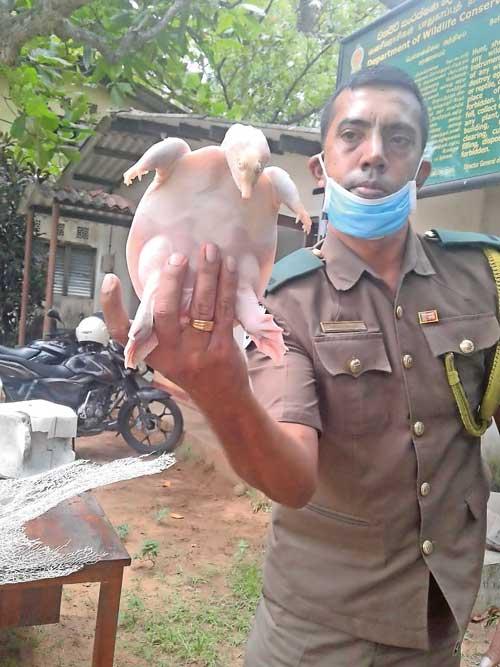 This however is not an isolated incident, Wildlife Ranger Liyanagama told the Daily Mirror. Wildlife trade often takes place through other business fronts, and is well on its way to become a trend in Sri Lanka, Liyanagama said. “In this particular raid, we discovered some species of imported insects as well. However we were unable establish if the proprietors actually engaged in the exotic pet trade, although we found evidence to support this theory. Therefore we were only able to file a case against him on charges of possession of a great number of illegal items,” he said.
This however is not an isolated incident, Wildlife Ranger Liyanagama told the Daily Mirror. Wildlife trade often takes place through other business fronts, and is well on its way to become a trend in Sri Lanka, Liyanagama said. “In this particular raid, we discovered some species of imported insects as well. However we were unable establish if the proprietors actually engaged in the exotic pet trade, although we found evidence to support this theory. Therefore we were only able to file a case against him on charges of possession of a great number of illegal items,” he said.
According to the Fauna and Flora Protection Ordinance no person can hunt, shoot, kill, wound or take any wild animal or have any wild animal in his possession, whether dead or alive. According to the Ordinance it is also illegal to possess any part of an animal. Following a lengthy investigation and other procedures the tortoise and the iguana were handed over to the Dehiwala Zoo while other items including the insects were handed over to the Department’s museum.
"We have nabbed countless efforts to export rare and endemic species. Sometimes we have even apprehended those attempting to trade these animals or reptiles within the country."
“Importing animals is a long process. There’s a lengthy quarantine process and paperwork involved. Many reports have to be sought and it involves a lot of approvals from the Wildlife Department and Customs clearances, none of these were in possession of this suspect,” he said. Liyanagama points out that this is just a single example of the great calamity that awaits Sri Lanka, unless people are more aware of the consequences of their actions.
The proprietor of the popular tattoo parlour runs his business with a team of at least half a dozen tattoo artists. The parlour patronized by many locals and foreign travellers alike, also have links with other tourist-friendly hotspots in the South. Sources revealed that although the recent raid had put a stop to their illicit activities, the business of finding rare and exotic wildlife trophies had taken place even in the past.
“In East Asian countries such as Malaysia or Singapore, they breed ornamental and exotic pets; they kill them and even frame them for sale. But in Sri Lanka, the law does not allow these practices. Our religious and cultural background does not permit such practices either. It is one thing to have a pet cat or dog, but it’s an entirely different thing to breed exotic pets, which is now becoming a trend,” he said.
In its first global report on the illegal wildlife trade published by the Financial Action Task Force (FATF) in 2020, the trade was described as a “global threat.”
The report also revealed wildlife trade links with other organised crimes such as modern slavery, drug trafficking and the arms trade.
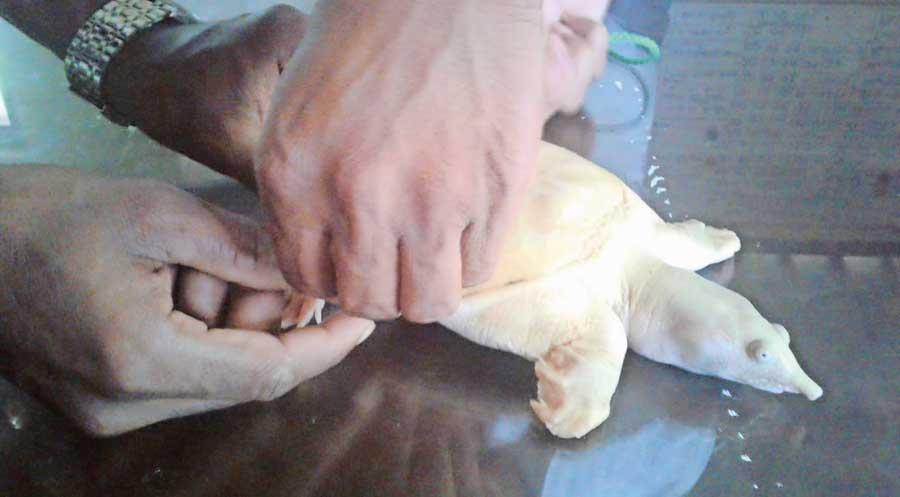
The albino tortoise
"According to the Fauna and Flora Protection Ordinance no person can hunt, shoot, kill, wound or take any wild animal or have any wild animal in his possession, whether dead or alive"
The wildlife trade is an extremely profitable avenue for those seeking illicit profits. It is estimated to generate revenues of up to US$ 23 billion a year. FATF said that while implementation financial probe is key to dismantling the syndicates involved, which can in turn significantly impact the associated criminal activities.
|
Deer antlers |
The FATF study also found that 22 of the 45 respondent countries considered themselves as source for wildlife crime. 18 were identified as transit countries and 14 as destination countries. All but nine reported to be impacted by the risks from financial flows linked to the trade, with the majority of exceptions being European countries. It is imaginable that Sri Lanka, being the strategic location it prides itself to be, may well be a link in this global network.
Wildlife imports; a bigger problem than exports
However wildlife export is not the only aspect of this trade that we should be concerned about, points Liyanagama. “We have nabbed countless efforts to export rare and endemic species. Sometimes we have even apprehended those attempting to trade these animals or reptiles within the country. But I see a much more troublesome issue before us, which is the uncontrolled import of invasive species,” he said.
The Wildlife Ranger referred to Australia’s strict bio-security laws, especially in the wake of an invasive toad species wreaking havoc in many parts of the country. The Cane Toad, originally from South America, was introduced Australia in 1945 to control destructive beetles in Queensland’s sugarcane crops. Many decades later, researchers are now estimating that this toad will most likely invade the entire continent, over the next five years.
The impact of Cane Toads is listed as a key threatening process in Australia’s Environment Protection and Biodiversity Conservation Act of 1999. The government has also provided more than US$ 2 million over two years to reduce the impacts of cane toads and to develop a national cane toad plan. This is how bad ill-thought imports of bio-hazards can get, costing millions in government funds to combat its adverse effects in the long run.
"The Fall Armyworm is a moth native to tropical and subtropical regions of the Americas that has now spread globally. The Fall Armyworm once it takes hold is not possible to eradicate or control"
“The Fall Armyworm (Sena Worm) problem in Sri Lanka is yet another example for this issue,” Liyanagama points out. The Fall Armyworm is a moth native to tropical and subtropical regions of the Americas that has now spread globally. The Fall Armyworm once it takes hold is not possible to eradicate or control. An adult moth can fly up to a 100km in a single night. Since its arrival in West Africa at the beginning of 2016, the Fall Armyworm has reached most African countries. It has also spread further to the Near East and to more than a dozen Asian countries, including China, India, Japan and now Sri Lanka.
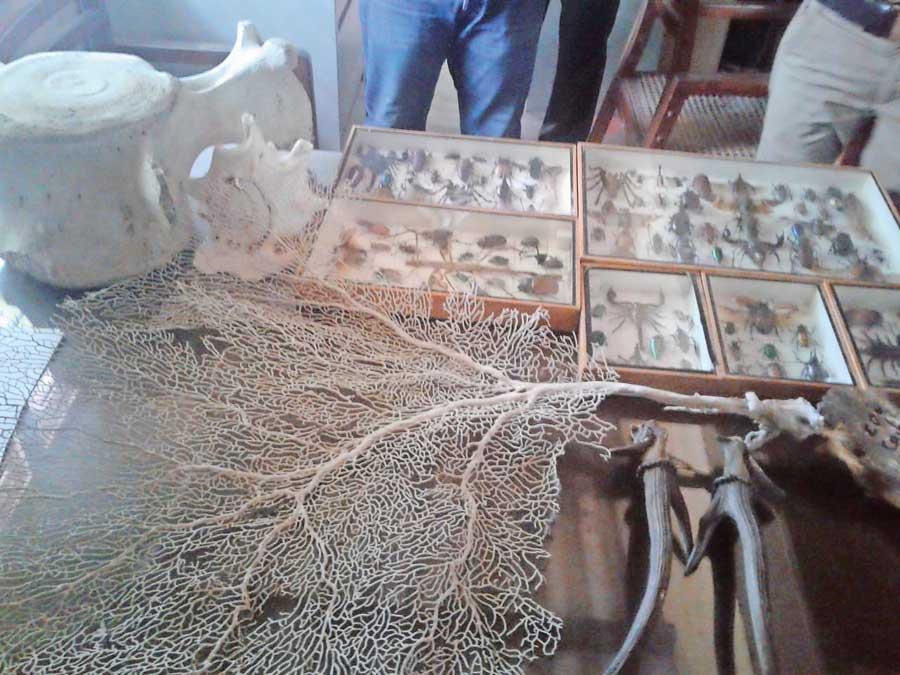
More bio-hazards await
Another trend slowly taking hold in Sri Lanka is the breeding of Ornamental Fish, the wildlife official said. Lanka prides itself for its rich bio-diversity. It is one of the most superior landscapes in the region. But what people do not understand is that the introduction of a single new species, even an insect, into this delicate system can cause extensive damage,” Liyanagama warned.
“For instance there still no proper law for breeding ornamental fish in Sri Lanka.
We all know that the scavenger fish is already wreaking havoc in our inland water systems. The inland water systems are already threatened due to invasive fish species, which has already caused great distress for the fisheries industry,” he stressed.
Liyanagama added that the breeding the fish species such as Piranha was extremely popular in the 1980s. “This trend died down, but if you go searching to purchase this fish, I’m sure there will be a plenty of traders to find one. These types of carnivorous fish are again available in the market now, but there is absolutely no regulatory framework to ensure that our bio-diversity is protected. At this rate, we won’t have much to boast of over the next 10 years,” he added.
Interestingly, Sri Lanka also has a State Ministry dedicated for Ornamental Fish, headed by Minister Kanchana Wijesekara. While increasing the breeding of Ornamental Fish has been in the talks as a means of diversifying the country’s exports, there has been little or no attention paid to what is imported to the country, nor have the effects of these unregulated imports been studied.
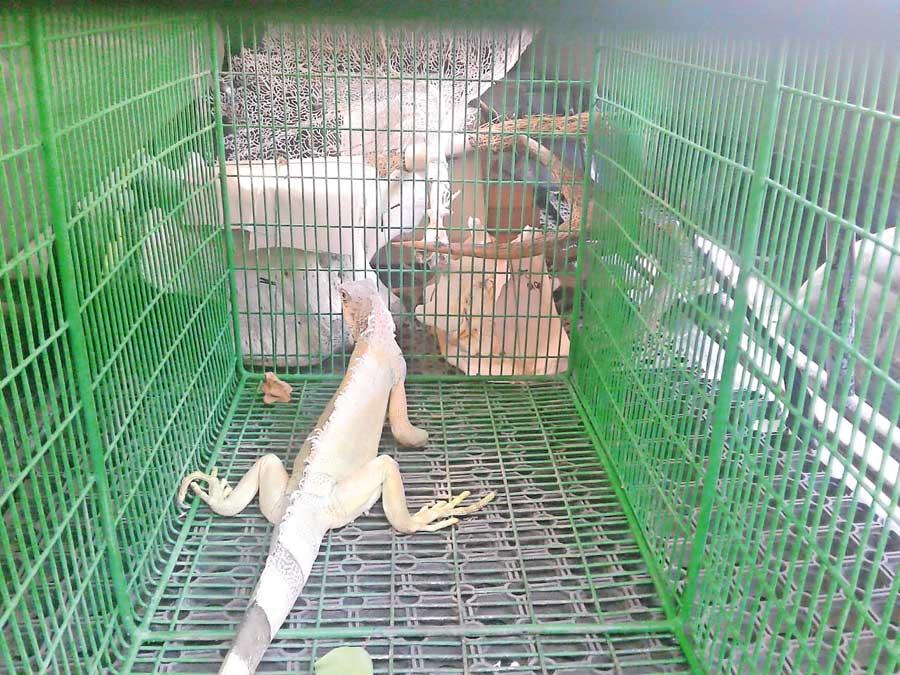
The green iguana found at the tattoo parlour
31 Oct 2024 7 hours ago
31 Oct 2024 8 hours ago
31 Oct 2024 31 Oct 2024
31 Oct 2024 31 Oct 2024
31 Oct 2024 31 Oct 2024